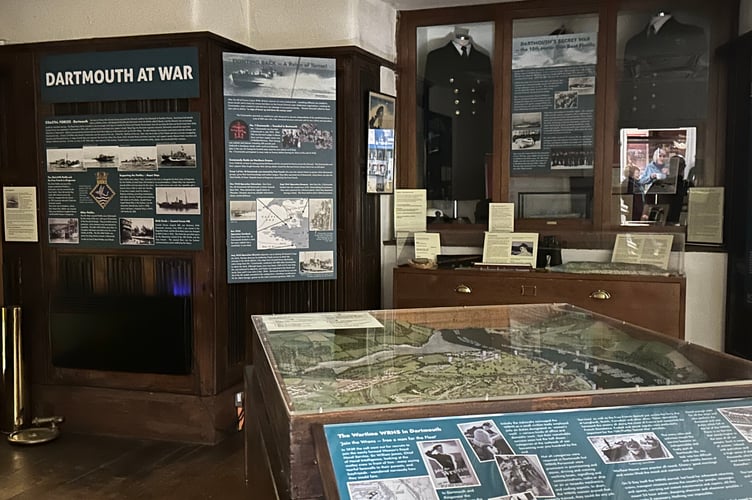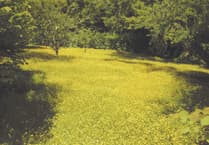The new exhibition at Dartmouth Museum uncovers details of the naval and secret forces that defended our shores and prepared for the invasion of Northern France.
The exhibition, includes a film created by Dartmouth Museum volunteers.
Museum Chair, Mike Rowley said:
“We are familiar with the tremendous efforts that went into the extraordinary amphibious invasion of Northern France on D Day, and our exhibition continues to showcase this.
“However, we are glad to have this opportunity to focus on lesser known units who played an important part in protecting the port and waters around our coasts, mainly under the Command of Coastal Forces, Dartmouth.”

Coastal Forces were set up at the start of the war, and after the fall of France in 1940, they were a critical part of our defences and means of protecting convoys.
The HQ was called HMS Cicala and occupied what was formerly the Royal Dart Hotel.
It is estimated that up to 30 small boats, and around 500 crew and support teams were berthed in depot ships on the river.
Dartmouth was home to the 7th Motor Launch Flotilla for anti-submarine and mine clearance duties, and a number of Motor Torpedo Boat Flotillas including the 23rd crewed mainly by the Free French, and the 65th crewed mainly by Canadian Naval personnel.
In total 13 Flotillas were based at Dartmouth over the course of the war.
After the fall of France in June 1940, Churchill challenged his military advisers to come up with a flexible, fast-moving force the result was the Commandos.
No. 1 Commando was created in Dartmouth, and 400 men were selected to join the unit.
Dartmouth was the perfect place to run a clandestine service placing secret agents into France to support the French Resistance, and secure key intelligence about German forces ahead of D Day.
The Admiralty Secret Intelligence Service 15th MGB Flotilla operated undetected for four years as the “Channel Bus Service” for secret service agents or for returning POW escapees.
The 15th MGB Flotilla was the most highly decorated unit in the Royal Navy during WW2.
From late 1943 Dartmouth was the base of the US Navy’s XI th Amphibious Division and 4th Infantry Division and saw the building of craft and training of the men they would carry to Utah beach on D Day.
The area behind Slapton beach was evacuated and many families left, never to return.
During a Exercise Tiger, a live training operation, torpedoes from German E boats sank a Landing Craft Ship, with the loss of an estimated 900 lives.
The damaged ships returned to Dartmouth.

The WRNS, known as the Wrens, were a critical part of Naval forces in the port, throughout the war. Many lived locally, while others lived in Wrenneries.
The Wrens took on increasingly central roles: running the launches that kept people moving from ship to shore; installing and servicing the barrage balloons, and critically, providing the skilled stenographers and telecommunications staff for the secure communications.
Dartmouth Museum is open 7 days a week from 11am-3 pm
Visit: www.dartmouthmuseum.org




Comments
This article has no comments yet. Be the first to leave a comment.